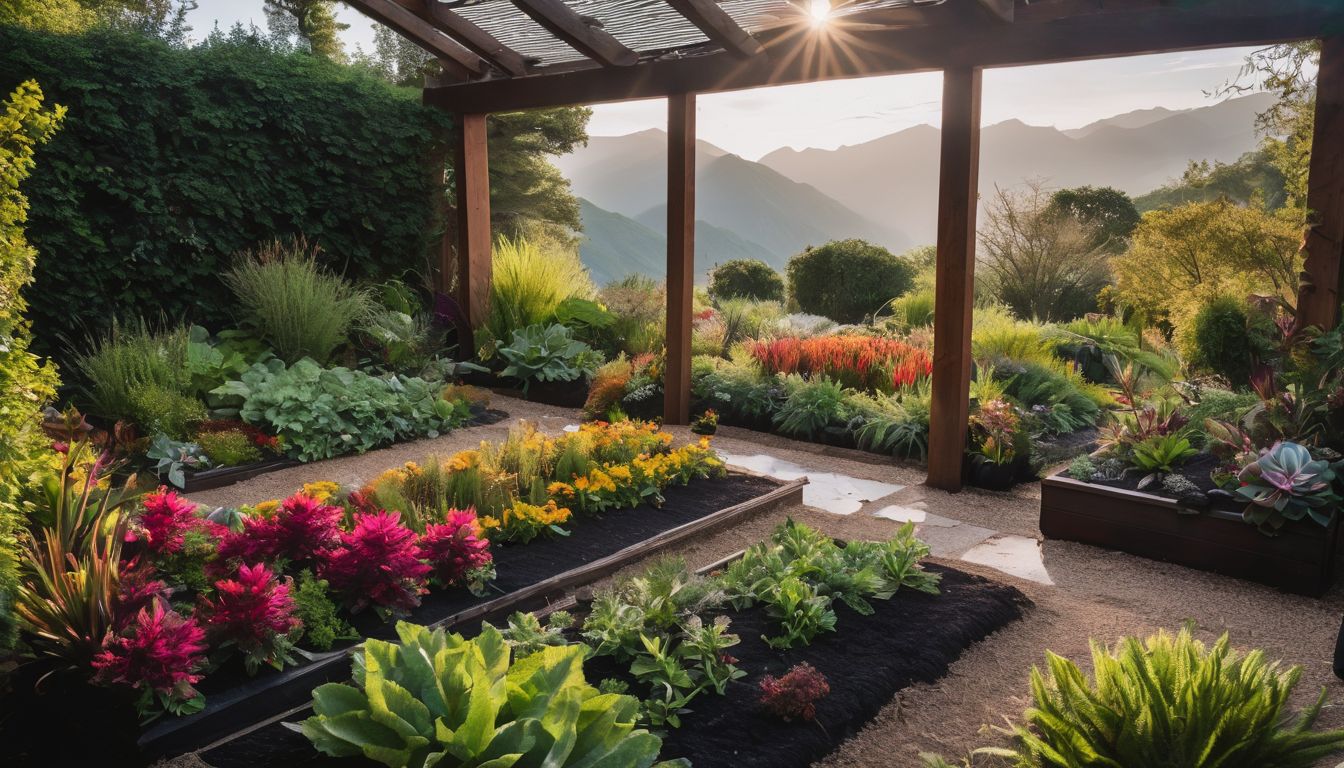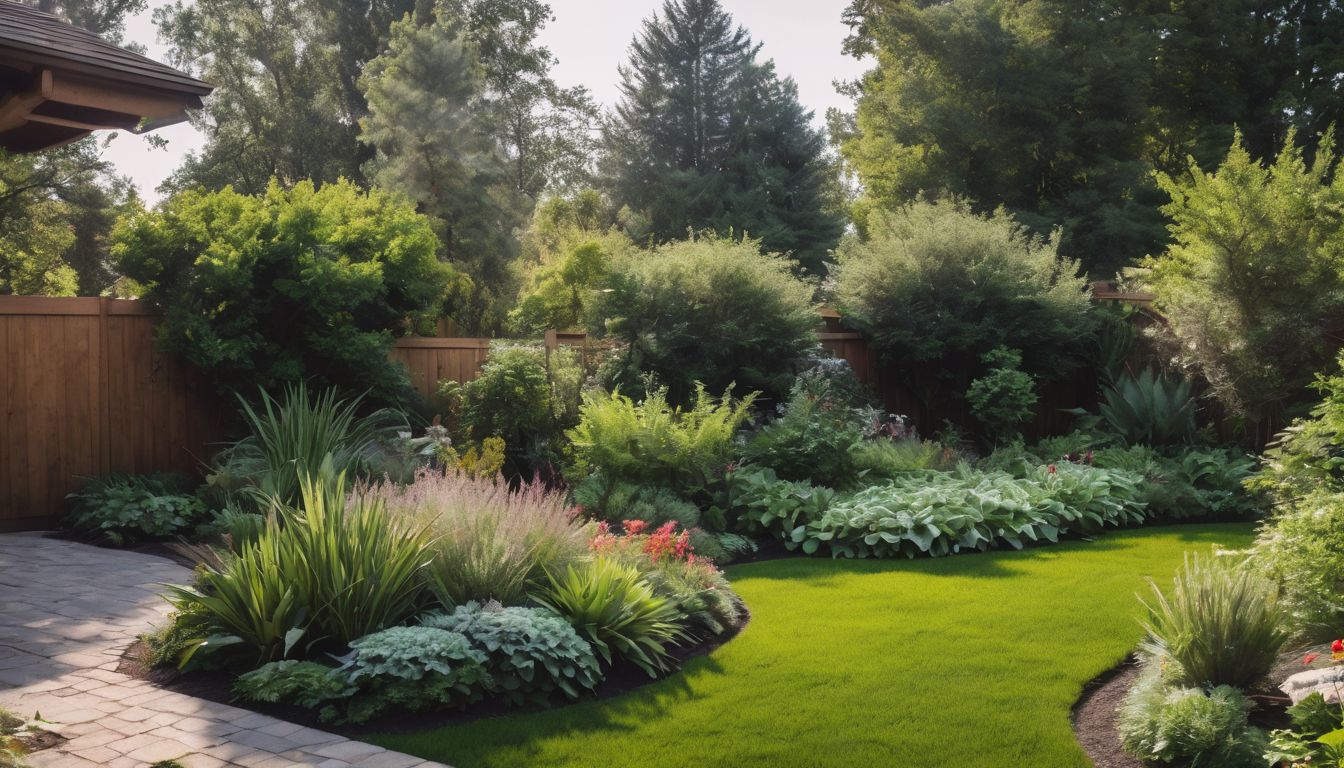As cities grow, finding space for gardens gets tougher. Vertical gardens turn walls into green havens, even in the smallest of urban homes. This post offers insights on making your own skyhigh oasis, enhancing both home and health.
Let’s dig in – upwards!
How to Build a Vertical Garden on a Building
Create a beautiful and sustainable vertical garden with a blend of art and science. Explore techniques for installation and consider the cost implications involved.
A blend of art and science
Designing and constructing a vertical garden involves a delicate blend of art and science. Utilizing principles of horticulture, engineers and architects integrate living plant installations into building infrastructure.
This process demands an understanding of how different species will thrive in specific environmental conditions, while also coordinating the structural elements to support the weight and water needs of the plants.
Integrating various textures, colors, and shapes creates visually appealing green spaces that harmonize with urban architecture. Additionally, scientific knowledge underpins irrigation systems, soil composition, and sustainable plant choices for optimal growth.
Techniques for installation
After understanding the artistic and scientific aspects of vertical gardens, it is important to know the techniques for successfully installing them on buildings. Here are some techniques for installation:
- Selecting the Right Plants: Choose plants that are suitable for vertical growth and require minimal maintenance. Consider factors such as sunlight exposure, climate, and water requirements.
- Installing a Support Structure: Install a sturdy support structure that can hold the weight of the vertical garden and withstand environmental conditions. This may involve using a framework of panels or trays attached to the building’s exterior.
- Irrigation System: Set up an irrigation system to ensure that the plants receive adequate water and nutrients. Drip irrigation or a recirculating hydroponic system can be used to maintain plant health.
- Soil Substrate: Use a lightweight soil substrate with good drainage properties to prevent waterlogging and promote healthy plant growth.
- Maintenance Plan: Develop a maintenance plan that includes regular inspection, pruning, fertilizing, and pest control measures to keep the vertical garden thriving.
- Professional Installation: Consider hiring professional installers who have experience in designing and implementing vertical gardens to ensure successful installation.
- Safety Measures: Ensure that safety measures are in place during installation to protect both workers and the building’s structure from any potential risks or damages.
- Long-term Viability: Plan for the long-term viability of the vertical garden by considering factors such as seasonal changes, weather impacts, and plant growth patterns.
- Building Regulations: Familiarize yourself with local building regulations and permits required for installing vertical gardens on buildings to ensure compliance with legal requirements.
- Eco-friendly Practices: Incorporate eco-friendly practices into the installation process, such as using sustainable materials, minimizing waste generation, and promoting biodiversity within the vertical garden ecosystem.
The Role of Vertical Gardens in Green Building Certifications
Vertical gardens play a crucial role in obtaining LEED and WELL certifications, as they contribute to sustainable design and environmental benefits. To learn more about how vertical gardens are shaping the future of urban living, continue reading.
LEED Certification and Living Walls
Living walls play a crucial role in achieving LEED certification for buildings. By incorporating living walls, architects and designers can earn points towards certification due to the environmental benefits they provide.
The natural insulation and air purification offered by living walls contribute to improved indoor air quality, reduced energy consumption, and decreased urban heat island effect. Additionally, the incorporation of biophilic design elements such as living walls aligns with sustainable architecture principles focused on creating healthier and more environmentally friendly spaces.
For environmentally conscious individuals looking to support conservation efforts through their buildings or homes, integrating living walls can significantly contribute to sustainability goals while also enhancing the aesthetic appeal of the space.
WELL Certification and Living Walls
Living walls play a crucial role in earning WELL certification for buildings. They contribute to a healthy indoor environment by improving air quality, reducing noise pollution, and fostering a sense of well-being among occupants.
The strategic placement of living walls also maximises natural light within the building, creating a more sustainable and eco-friendly space. Incorporating living walls into urban homes not only promotes sustainability but also aligns with the principles of environmental conservation by enhancing the overall quality of life for residents.
The integration of living walls as part of WELL certification signifies a commitment to sustainable design and supports the well-being of individuals within urban environments. These green installations provide tangible benefits that extend beyond aesthetic appeal, offering an opportunity for environmentally conscious individuals to actively participate in promoting conservation efforts.
Economic and Brand Benefits of Vertical Gardens
Vertical gardens can increase property value, attract eco-conscious residents, and improve air quality, making them a worthwhile investment for urban homes. Find out more about the economic and brand benefits of vertical gardens by reading the full blog post.
Improved air quality
Vertical gardens play a crucial role in improving air quality by filtering out pollutants and releasing oxygen. The plants within these structures absorb harmful gases such as carbon dioxide, volatile organic compounds, and particulate matter, effectively purifying the surrounding air and reducing urban pollution.
This not only benefits the immediate environment but also contributes to overall public health by creating cleaner city spaces for everyone to enjoy. As a sustainable solution for combating urban air pollution, vertical gardens offer an accessible way for environmentally conscious individuals to actively participate in greening their communities.
In addition to enhancing aesthetics, vertical gardens provide tangible environmental benefits by combating urban air pollution through natural processes that improve local air quality.
Conclusion
As urban space becomes more limited, vertical gardens offer a sustainable solution for bringing greenery into our homes. They enhance the urban environment while providing economic and brand benefits.
Embracing this trend is a step towards creating greener, healthier cities for future generations to enjoy.





